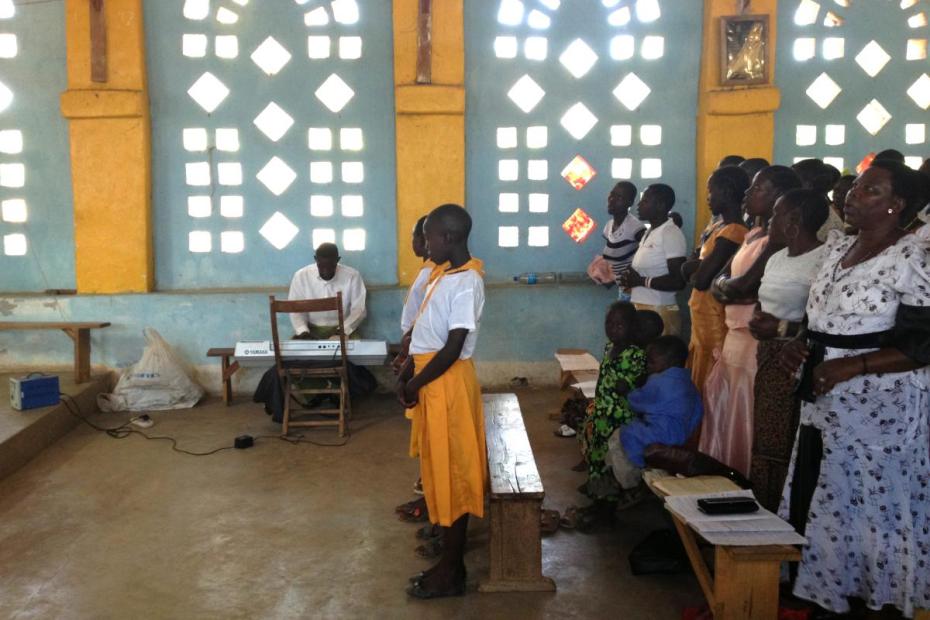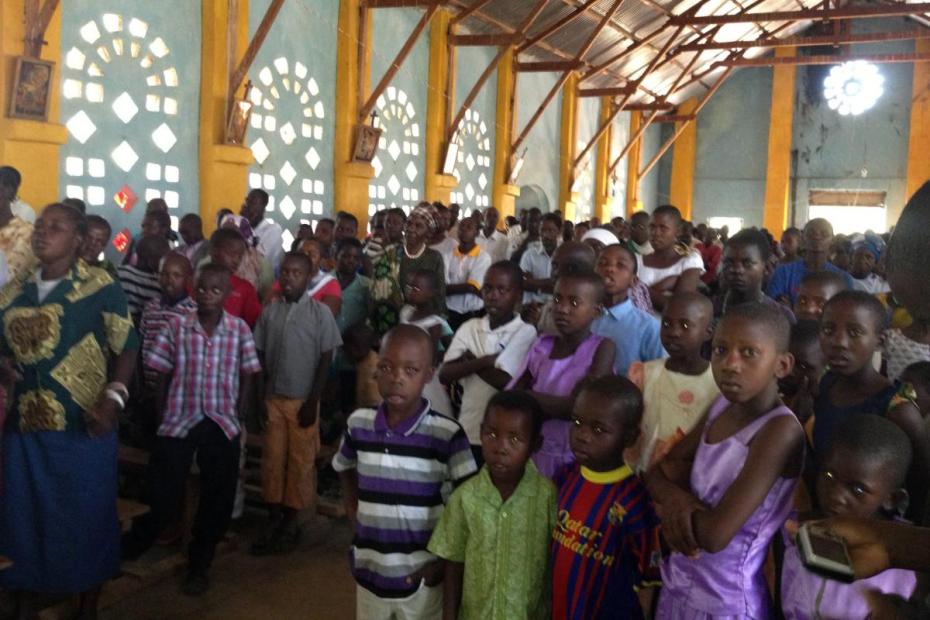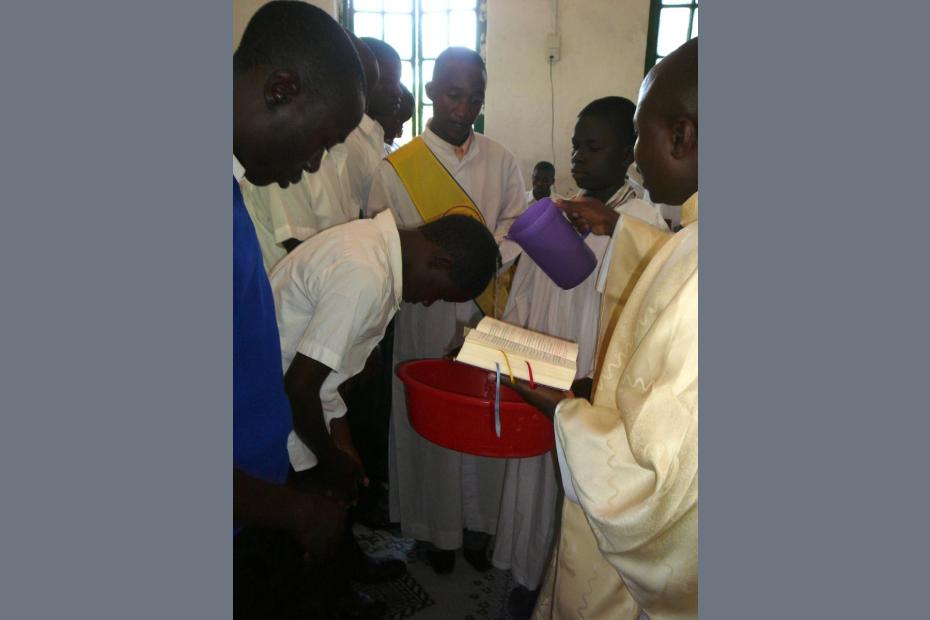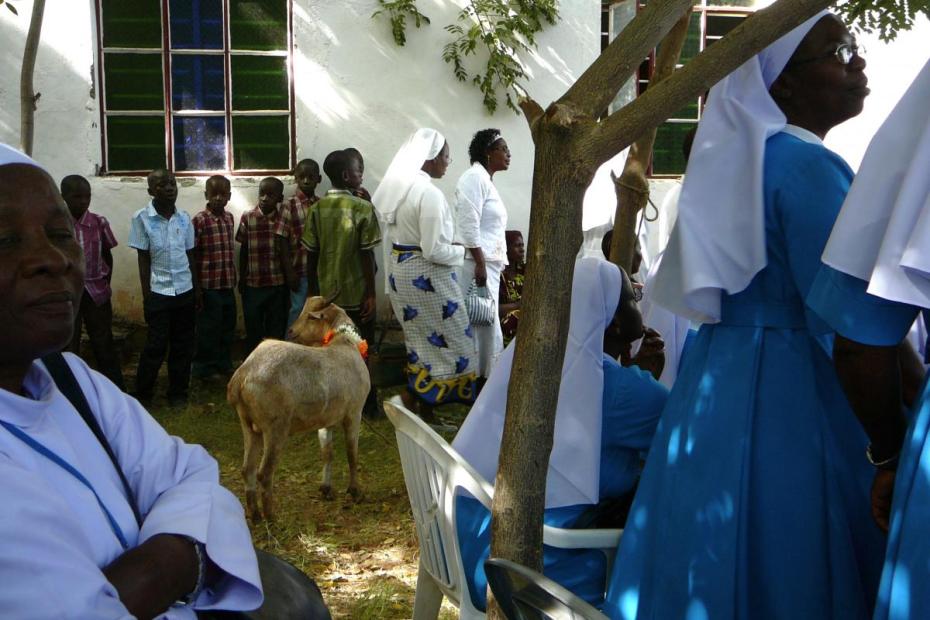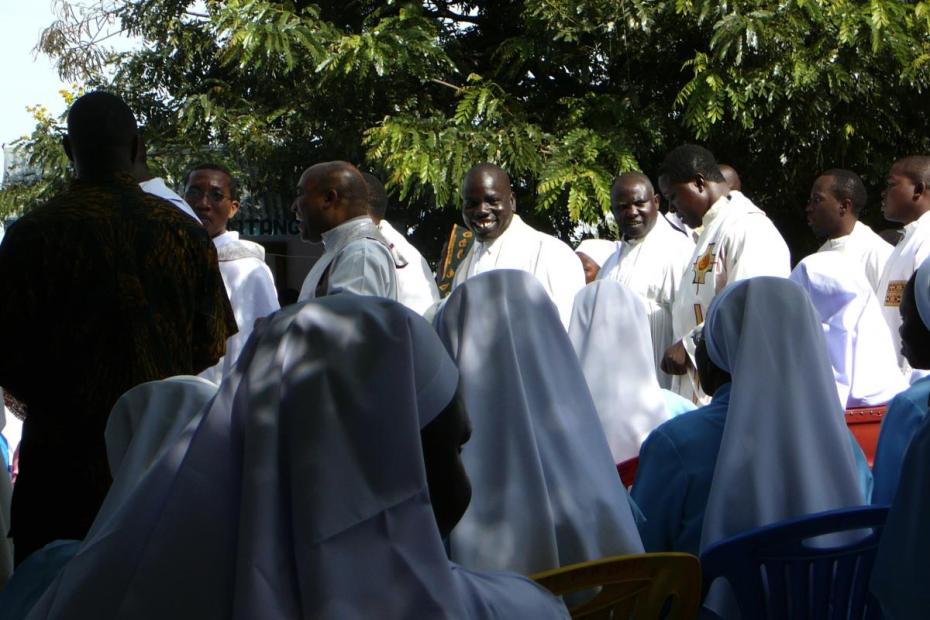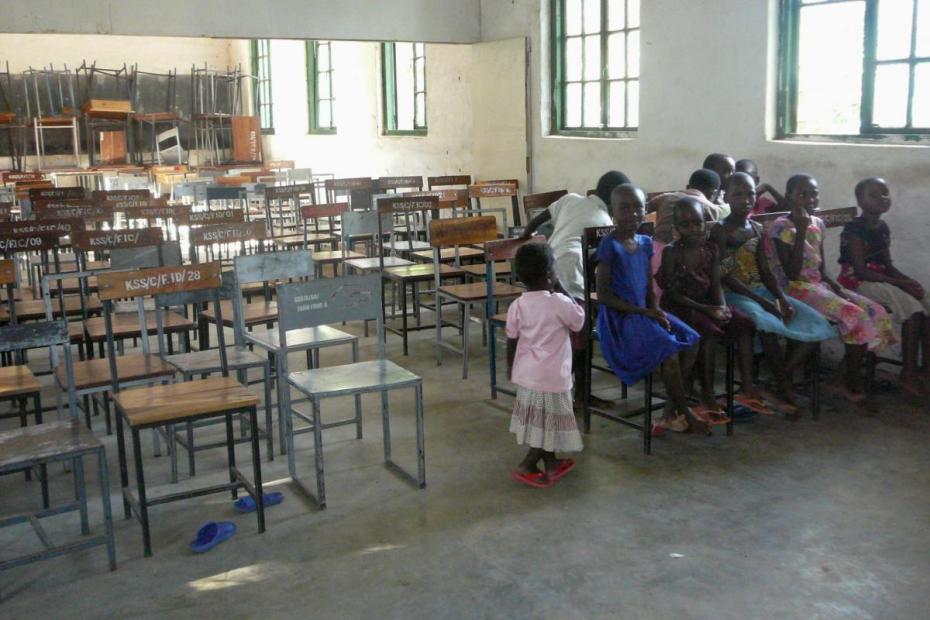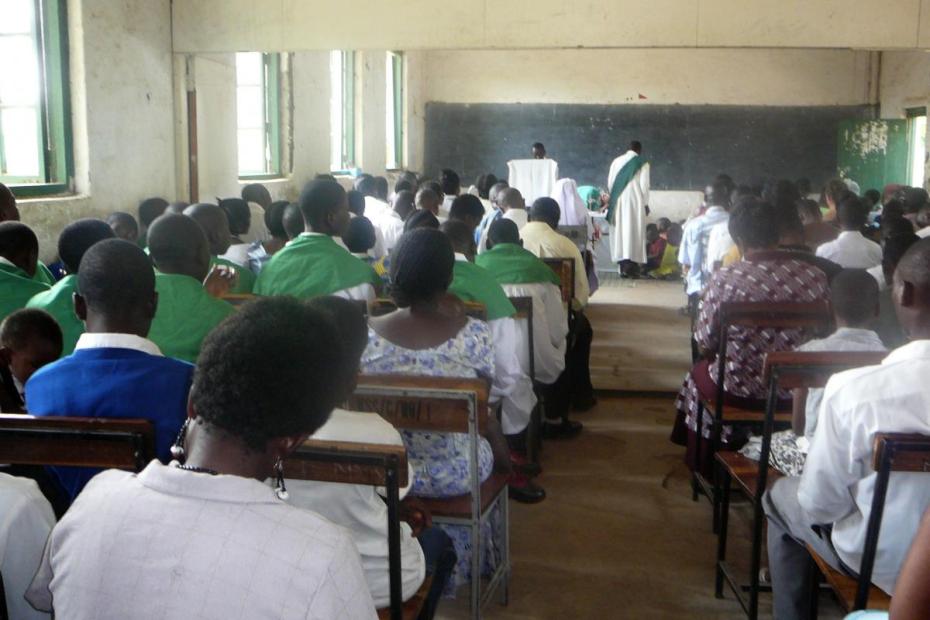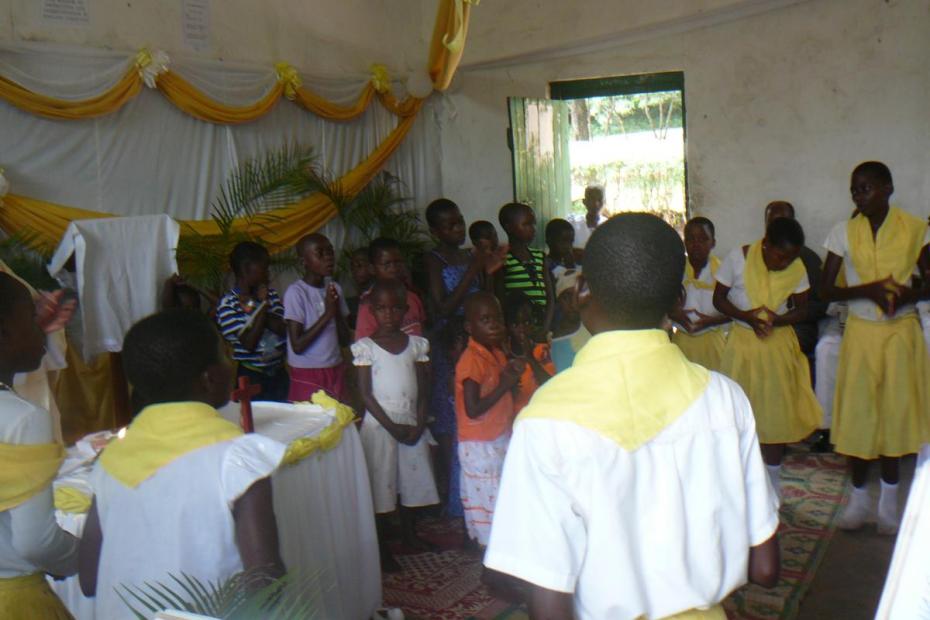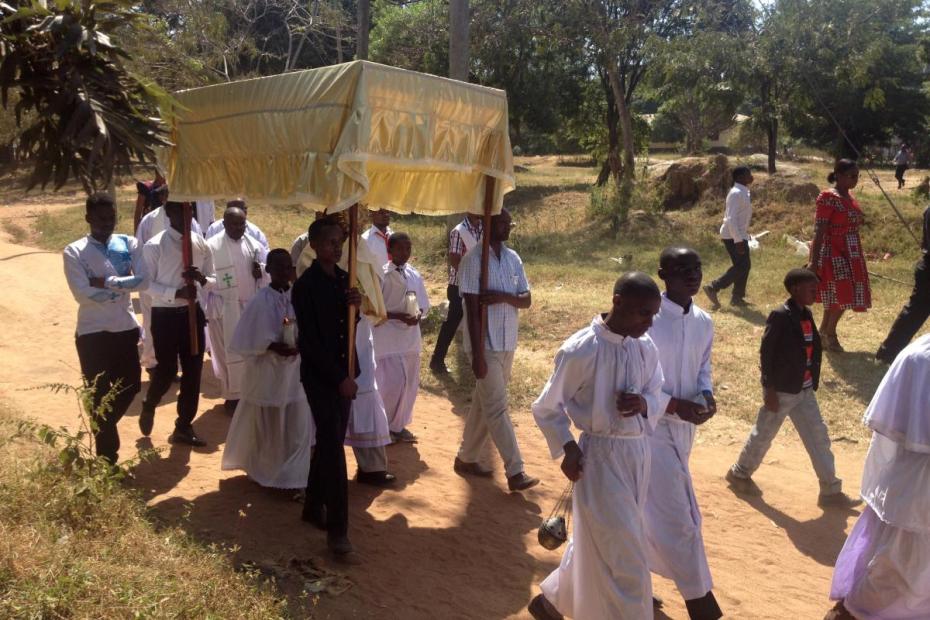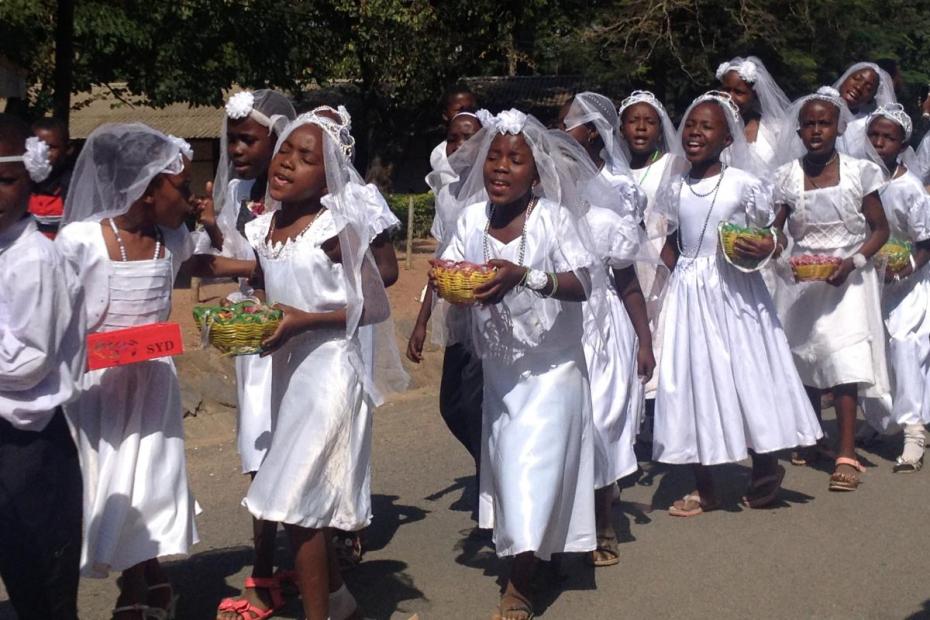Catholic worship in Tanzania revolves around the Mass, and a Tanzanian Mass shares much of the ritual formality one would find in any part of the Catholic world. But a vibrant African spirituality bubbles just beneath the surface of this solemn veneer, and joyful song and an unhurried sense of time allows Mass to be savored. Between the songs, the prayer petitions, and the homily, a regular Sunday Mass can easily stretch beyond two hours. African pride in appearance is also seen at Mass with everyone properly scrubbed and dressed in their Sunday best. Some parishes also host a group of young girls who dance during certain parts of the Mass in front of the altar; this custom stems from dancers who performed during tribal rituals decades ago.
In addition to regular Sunday Mass, feast days offer particularly dynamic liturgical celebrations. As in many parts of Africa, the Corpus Christi Mass in Mwanza concludes with a ritual public procession of the Eucharist. New communicants dress in their finest white dresses, and the one-mile procession is marked by singing, dance and interludes of Eucharistic adoration.
Mass is the focal point for holidays that have elsewhere become very secular, such as Christmas and New Year. Special care is taken to decorate the church with fabric, flowers, and lights, and choirs spend months preparing songs. Even the priest works harder in order to prepare especially long homilies. Perhaps one of the most festive celebrations is New Year’s Eve. Congregations often gather together hours in advance of midnight in order to celebrate Mass and leave enough time to bring in the New Year with singing, clapping, stomping, and even un-choreographed dancing.
Outside of Mass, other regular Catholic devotions are practiced. During Lent, for example, one of the most encouraged prayers is Stations of the Cross. Like all things Tanzanian, this prayer is drawn-out with scriptures read, prayers said, songs sung, and appropriate pauses for each station. Another Catholic custom is to wear a Rosary around one’s neck for both safekeeping and protection against any evil spirits. This is also an easy way to have a Rosary on hand when the Small Christian Community, choir, or small group of friends decides to pray the Rosary together.
Charismatic Catholic practices such as healing and speaking in tongues have grown in recent years in response to burgeoning Pentecostal churches. Weeklong, outdoor Catholic Charismatic rallies draw thousands listening to the testimonies of an array of local and international speakers. In other parts of Tanzania, Catholic revivalism has also taken a decidedly neo-traditional form. For example, Fr. Felician Nkwera’s Marian Faith Healing movement in Dar es Salaam combined charismatic healing and traditional Marian piety, drawing thousands of adherents until the local hierarchy condemned the movement in the early 2000s.
Read more
Christopher Comoro and John Sivalon, “Tanzania: Marian Faith Healing Ministry,” in Popular Catholicism in a World Church, eds. T. Bamat and J.P. Wiest (Maryknoll, NY: Orbis Books, 1999), 157-82.
